| View previous topic :: View next topic |
| Author |
Message |
nurbo
Joined: 23 Sep 2008
Posts: 457
Location: Lancashire



|
 Posted: Feb 22, 2011 05:51 Post subject: Natural History Museum London Posted: Feb 22, 2011 05:51 Post subject: Natural History Museum London |
|
|
I was in London for a while so I thought Id venture to the mineral room at the natural history museum in South Kensington. Ill get my complaints out of the way first..
Firstly ... the politically correct and the busy body lawyers have been in there and all the radioactives have been removed for "Safety reasons", this is ridiculous, they have many fragile specimens that would be susceptible to damage sealed in glass containers so why not the radioactives if theyre that paranoid about them
Secondly ... I found the lighting in certain areas to be appaling, yellow light bulbs which afffect the colour of some of the pieces, some of the pieces are in the shadows thown by the pillars that hold the roof up and are extremely hard to see in any detail escpecially if your eyes are as rubbish as mine.
Thridly ... some of the more fragile pieces are literally falling to bits due to not being kept in the righ conditions
Fourthly ... some items are mislabelled.
Then theres the Gift shop which sells baked Amethyst as "Citrine" alongside dyed agate and tumble stones.
| Description: |
| All the radioactives have these labels where the specimens should be. |
|
| Viewed: |
65904 Time(s) |
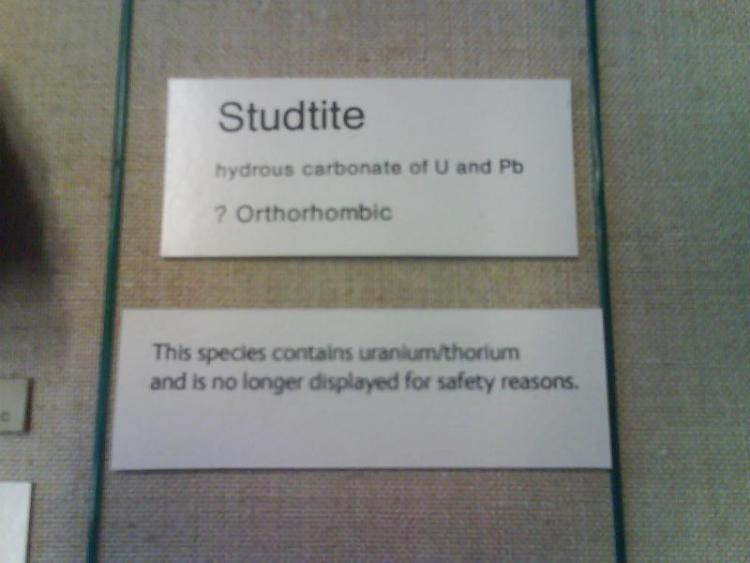
|
| Description: |
| Note the difference between the light through the window and the yellow light in the cabinet. |
|
| Viewed: |
65927 Time(s) |
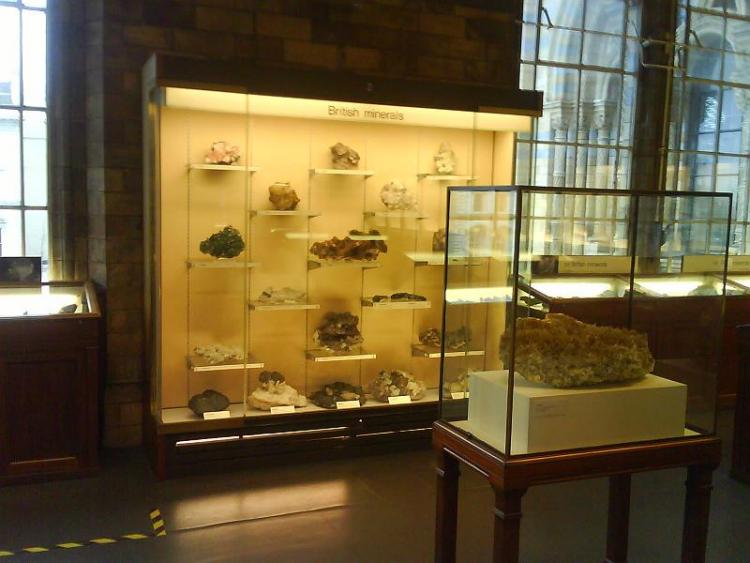
|
| Description: |
| Decomposing Searlsite specimen, what a shame. |
|
| Viewed: |
65952 Time(s) |
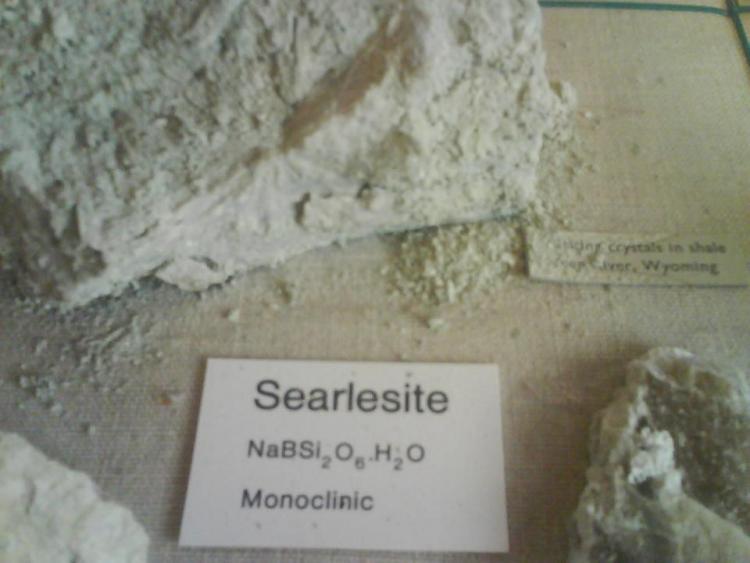
|
| Description: |
| Pyromorphite, Broken Hill ZAMBIA????? |
|
| Viewed: |
65912 Time(s) |
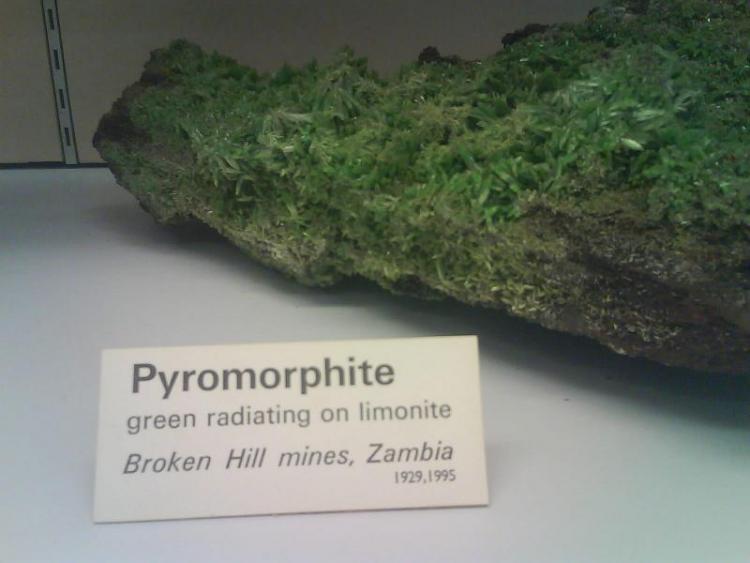
|
| Description: |
| Benitoite with BLACK Natrolite????? |
|
| Viewed: |
65964 Time(s) |
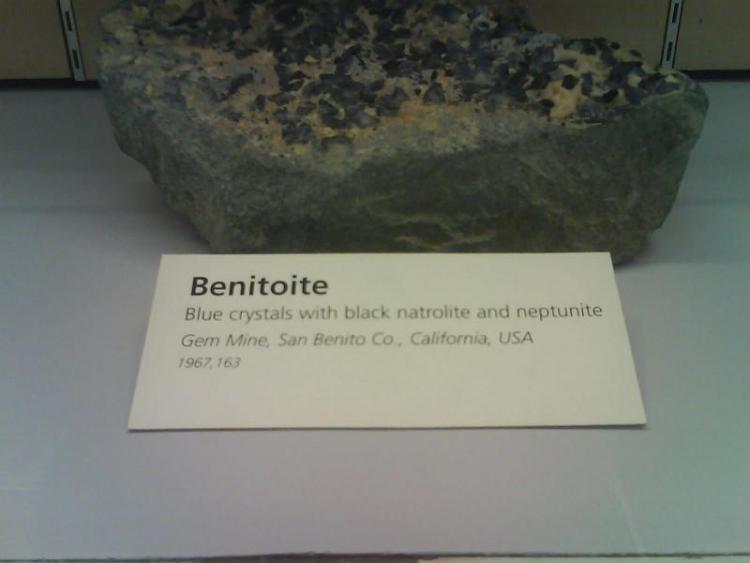
|
| Description: |
| Baked Amethyst sold as Citrine in the gift shop. |
|
| Viewed: |
65921 Time(s) |
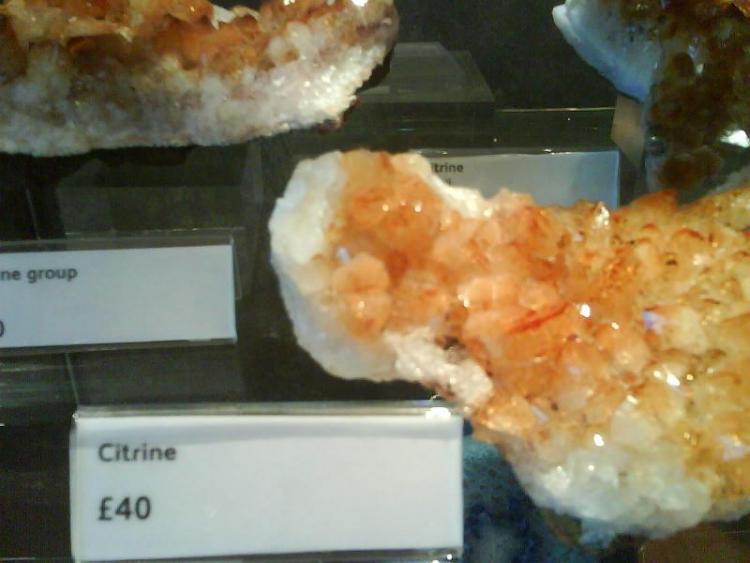
|
|
|
| Back to top |
|
 |
nurbo
Joined: 23 Sep 2008
Posts: 457
Location: Lancashire



|
 Posted: Feb 22, 2011 06:09 Post subject: Re: Natural History Museum London Posted: Feb 22, 2011 06:09 Post subject: Re: Natural History Museum London |
|
|
The good thing though is it is huge and has an absolutely amazing collection. I took about 130 photos and didnt even scratch the surface. It really is mind boggling how great the collection they have is, from slabs of Granite to a huge number of minerals Id not previously heard of to Calictes and Quartz. They have a fine collection of UK minerals from all over the country. Amazing and totally worth a vist, though I reckon it is overwhelming so its best to go a few times so you dont get any sensory overload, I'll post more later.
| Description: |
|
| Viewed: |
65914 Time(s) |
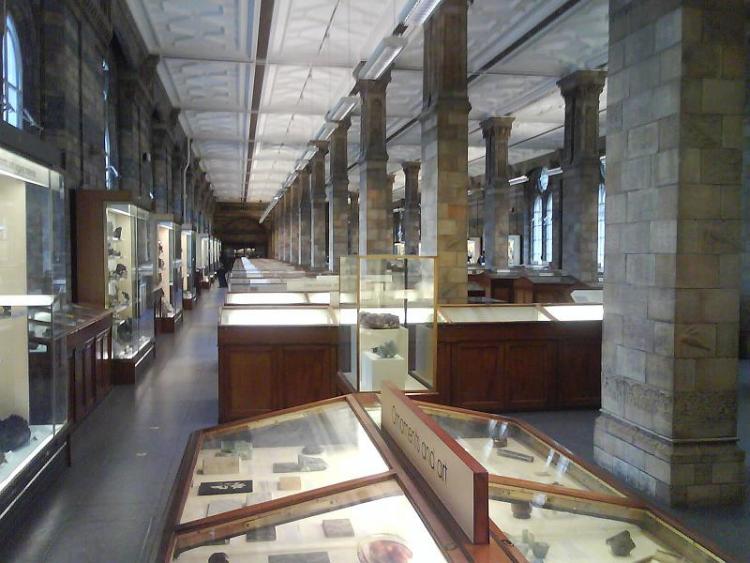
|
| Description: |
| Jap Law Quartz from Brazil, around 20 - 25 cms tall |
|
| Viewed: |
65878 Time(s) |
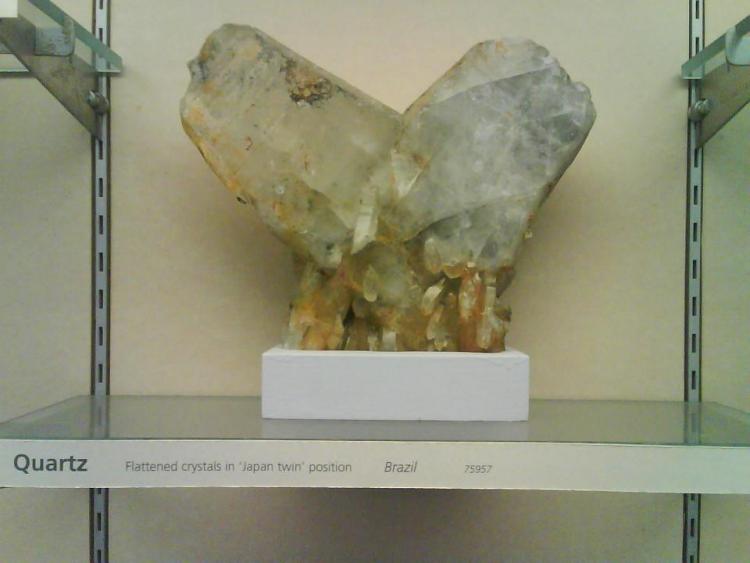
|
| Description: |
| Huge Beryl crystal about 75 cms tall I think it is from Mexico. |
|
| Viewed: |
65883 Time(s) |
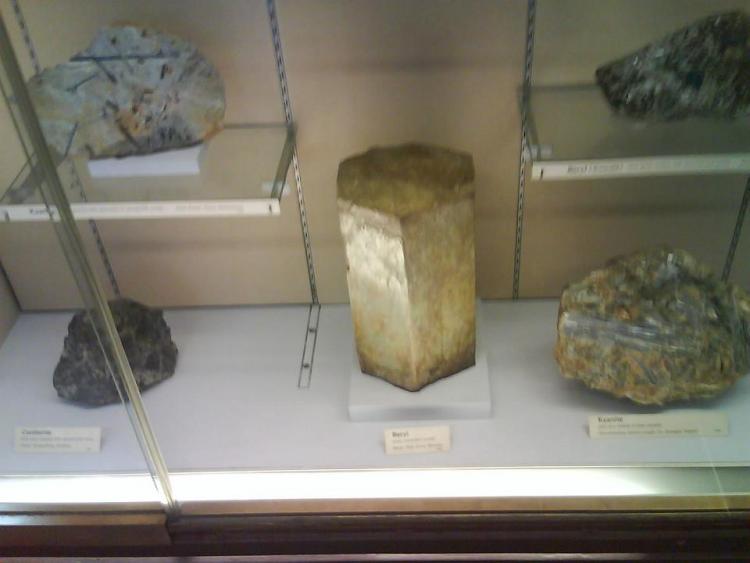
|
| Description: |
| Crandallitte from Cornwall about 75 - 80 cms across |
|
| Viewed: |
65869 Time(s) |
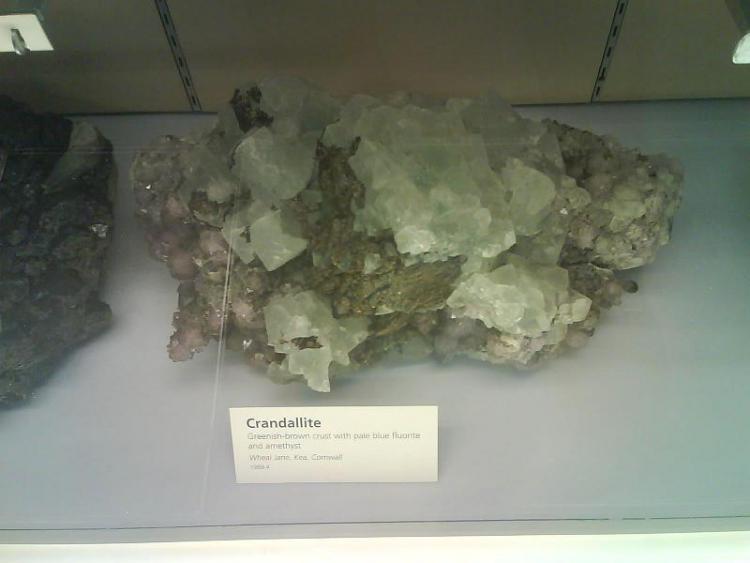
|
| Description: |
| Incredible 75 + cm Witherite, from the Fallowfield Mine |
|
| Viewed: |
65906 Time(s) |
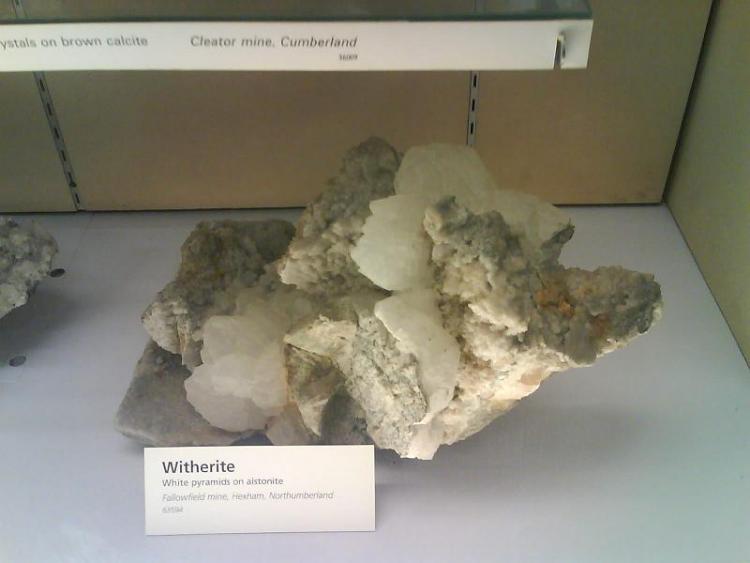
|
| Description: |
| Huge Kidney Ore about 75+ cms across from Lindal Moor |
|
| Viewed: |
65888 Time(s) |
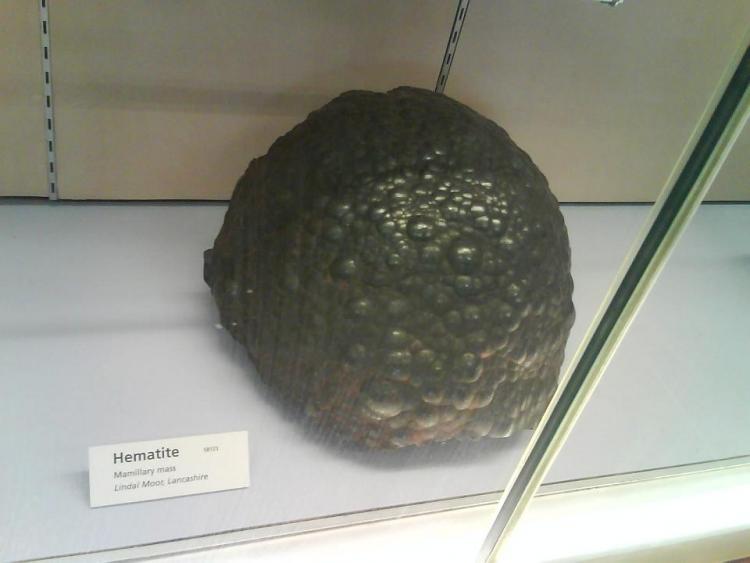
|
| Description: |
| Beautifully formed Andreasberg Calcite, about 75+ cms across. |
|
| Viewed: |
65907 Time(s) |
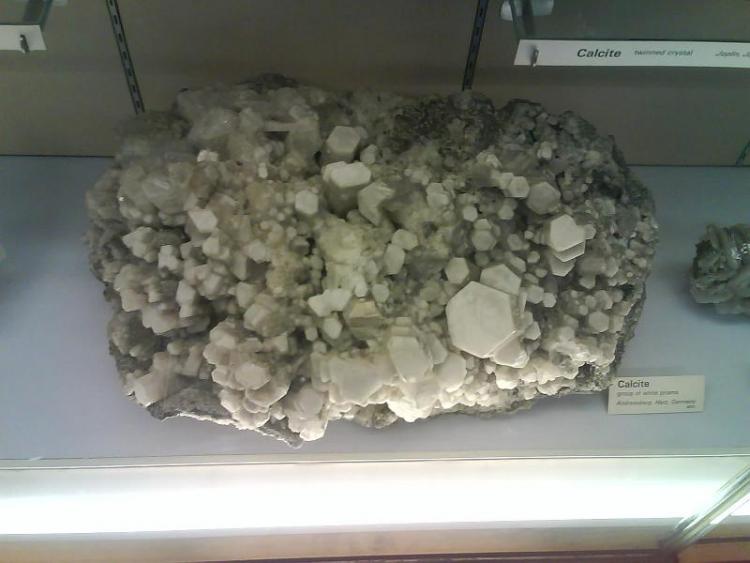
|
| Description: |
| Scottish Galena on Quartz around 30 cm across. |
|
| Viewed: |
65931 Time(s) |
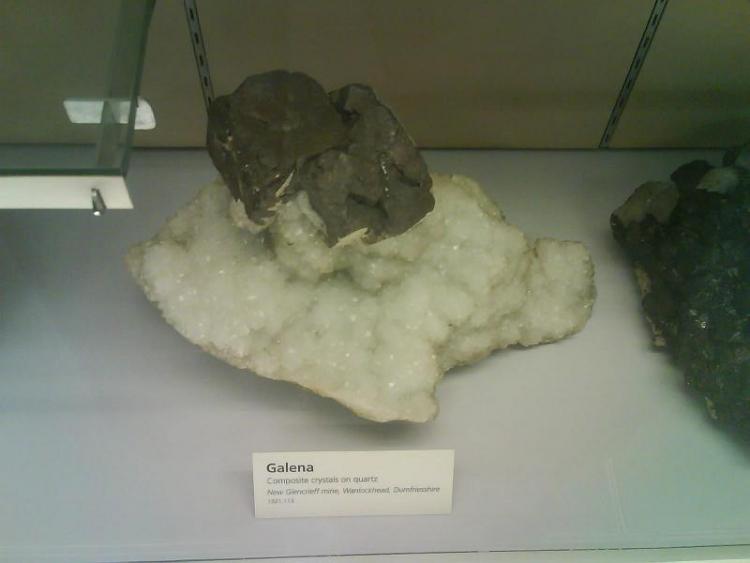
|
| Description: |
| Huge Cerussite from Cornwall, around 75+ cms. |
|
| Viewed: |
65886 Time(s) |
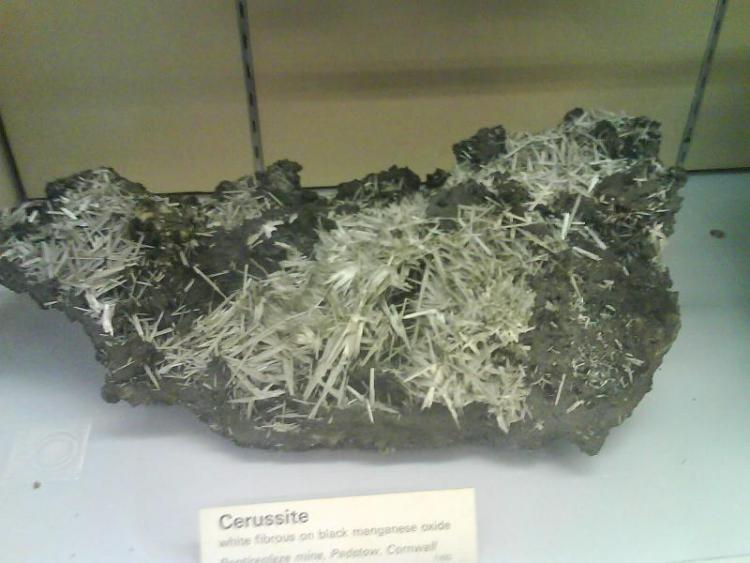
|
|
|
| Back to top |
|
 |
Jordi Fabre
Overall coordinator of the Forum

Joined: 07 Aug 2006
Posts: 5111
Location: Barcelona



|
 Posted: Feb 22, 2011 06:13 Post subject: Re: Natural History Museum London Posted: Feb 22, 2011 06:13 Post subject: Re: Natural History Museum London |
|
|
| nurbo wrote: |
Pyromorphite, Broken Hill ZAMBIA?????
|
Yes, is a mine named Broken Hill also in Zambia and with green Pyromorphites! ;-) -> https://www.mindat.org/loc-4341.html
|
|
| Back to top |
|
 |
arturo shaw

Joined: 23 Oct 2009
Posts: 89



|
 Posted: Feb 22, 2011 06:22 Post subject: Re: Natural History Museum London Posted: Feb 22, 2011 06:22 Post subject: Re: Natural History Museum London |
|
|
Hi,
First I think that we have to separate the museum and minerals display from the shops which are private business and have nothing to do with the minerals collection.
Did you pay to visit the collection? Every museum in the world has problems dealing with the little amount of many they have to keep their collection. I would like to have more money to deal with mine too. No Museum at all will object if you insist to make a contribution in cash, many even have boxes ready for the case being. :-)
I think we could wait for Alan or Mike to tell us about those problems you are mentioning and the reasons behind.
And I will be there after tomorrow and take a direct look at the situation. :-)
Cheers
Arturo Shaw
PS: Was the exhibition on sex already open? (Doesn't sound right "exhibition on sex" I find) :-)
Cheers
Arturo Shaw
|
|
| Back to top |
|
 |
Jordi Fabre
Overall coordinator of the Forum

Joined: 07 Aug 2006
Posts: 5111
Location: Barcelona



|
|
| Back to top |
|
 |
crocoite

Joined: 06 Feb 2009
Posts: 490
Location: Ballarat, Victoria



|
 Posted: Feb 22, 2011 07:22 Post subject: Re: Natural History Museum London Posted: Feb 22, 2011 07:22 Post subject: Re: Natural History Museum London |
|
|
Nothing wrong with Broken Hill, Zambia...
Regards
Steve
|
|
| Back to top |
|
 |
Peter
Joined: 16 Jan 2009
Posts: 346
Location: Sweden / Luxembourg


|
 Posted: Feb 22, 2011 08:39 Post subject: Re: Natural History Museum London Posted: Feb 22, 2011 08:39 Post subject: Re: Natural History Museum London |
|
|
| The large beryl I think is from the Moss area, Östfold (east side of the Oslo fjord), Norway.
|
|
| Back to top |
|
 |
Les Presmyk
Joined: 06 Dec 2007
Posts: 372
Location: Gilbert, AZ


|
 Posted: Feb 22, 2011 08:43 Post subject: Re: Natural History Museum London Posted: Feb 22, 2011 08:43 Post subject: Re: Natural History Museum London |
|
|
| Broken Hill, Rhodesia produced world-class pyromorphite, smithsonite, hopeite and parahopeite, among others. I was not sure if the total locality was being questioned or just Zambia versus Rhodesia.
|
|
| Back to top |
|
 |
Alan.Hart

Joined: 05 Jan 2009
Posts: 15
Location: London


|
 Posted: Feb 22, 2011 08:55 Post subject: Re: Natural History Museum London Posted: Feb 22, 2011 08:55 Post subject: Re: Natural History Museum London |
|
|
Well first off thanks for posting a message about our collections, whether good news or bad - people have opinions and it also gives us a chance to not only try and put things in perspective but also reveal our plans and hope to set things straight - and of course learn what people want to see.
First off, arturo is right in the fact that the shops are very much separate from the minerals collection, although we would like to build a closer relationship with content - I will certainly bring this to the attention of our 'shops' people to ensure we put in some disclosure here.
Yes, all 'radioactive' specimens have been removed from display apart from a few that are in specially designed lead-lined and mirror viewed cases. The reason being that we had to follow health and safety legislation and obey legal limits of exposure compliance. The only reason we have kept the labels in the case was to try and maintain some semblance of 'systematics' although as I shall come to later this will be reviewed.
We are quite aware of some of the decayed specimens which are being removed (albeit slowly), and the variance in lighting (although I must say your image does make it look much worse considering your other images of large specimens are in identical cases). Fluorescent lighting is the worse type for any display, daylight of course being best for which the space itself is very good for within the systematic collection (apart from the darker early evenings). I had to smile at the 'black natrolite', a more recent label that seems to have been somewhat swopped around during proof reading - to be fixed.
With such a large collection and collections 'space' there will always be some problems. However, this doesn't mean that they should be overlooked, so in terms of the future we are looking at major plans for the development of the collection and displays. I'm glad you figured some positive aspects and specimens from the collection. It is true to say that every-time I come into the Museum and walk through the collection areas I am simply amazed by it. Indeed, I believe it is still one of the largest and most comprehensive (if not the!) in terms of its depth of coverage, although of course in more recent years it has been lacking in resources to develop as we would like - however I see a change here.
For some background information - for some years we had been close to losing the gallery. With what looked like a global decline in systematic mineralogy through loss of systematic displays to themes, or the what I like to call the rise of 'short-term-ism' where the realisation of the monetary value of specimens leads to what can only be described as selling off the 'family silver' to raise funds which may not be directly related to developing a the collection from which they came - things looked pretty grim. However, at the NHM the collection is not only about the display itself, but also about how it may faciliate active research into various aspects of the mineral Sciences. It is through cleverly linking these perceived different aspects of collections that we can plan a way forward to develop both.
As curator, who is fortunate to have an excellent (and small) team to work with, we have a vision to set in motion that will certainly take time - but our plans are coming together. I hoped you managed to see the Vault space which was our first goal, to show off some of the best parts of our collection with good narrative information that both enlightens our visitors and sets a standard of display. This exhibition has been a huge success, visitors coming to Museum who may never had considered the beauty of a well crystallised specimen, have been 'enlightened' and no doubt wondered at how some of the magnificent specimens have 'formed'. From this exhibition, we have a direct link pointing at the systematic collection as 'natures mineralogical diversity', and through this we have a plan of collections development that is not only in place to facilitate the aim of having this diversity represented, but as to how it may be used (or is used) as a research resource. This has lead to our second goal in that the collection is not perceived as a 'dreary display of extended Victoriana', but a dynamic collection that meets the needs of research linked with a diverse specimen display, including the many unique specimens that reflect this.
Our next goal is to develop the gallery display itself. As I mentioned, we do acknowledge that the gallery needs upgrading, including some new lighting since it has hardly changed since 1880, but we do need to fit this in with other Museum priorities ahead of it. One of the major issues is of course 'funding', which would be quite significant to put in place the changes we anticipate. However, I do see that over the next few years this will happen - we like to think we have developed good relationships to those who may consider realising our goals. For me personally the goal will be keeping the impressiveness and historical aspects of the space, but adding modern lighting and a mechanisms for keeping the displays revised and up-to-date, and to ensure the collection itself is both continued to be added to through a dynamic acquisitions programme. This is already happening in terms of how Mike and I are now funded to attend the Tucson and Munich shows with a much better 'budget' being in place year on year - but we still have a way to go. Its here also I must thank those people who loan and donate to us specimens and funds, which has been rather better lately - I hope a reflection that that we are seen as a place that is still 'doing Mineralogy' including developing the collections and championing our hobby and science.
I have seemingly digressed a little. Yes we have problems as all large public collections do, but I hope you can see how far we have come and how far we want to go.
Also, we usually like to have some warning, but if you go to the visitors desk and we are here, we are usually always willing to say hi and 'talk minerals'
Arturio, 'Sexual Nature' is our new temporary exhibition, it is open and I must say I found it actually very good indeed having not much idea what to expect!
Best
Alan
Mineralogy Head of Collections, NHM
|
|
| Back to top |
|
 |
Jordi Fabre
Overall coordinator of the Forum

Joined: 07 Aug 2006
Posts: 5111
Location: Barcelona



|
 Posted: Feb 22, 2011 09:10 Post subject: Re: Natural History Museum London Posted: Feb 22, 2011 09:10 Post subject: Re: Natural History Museum London |
|
|
As FMFers can see, Alan is extremely affordable and friendly, and this is a treasure considering the fabulous patrimony he manages.
As I also said to other people with some critics to the current state of the NHM, please give Alan the oportunity to expand his projects and please try to be generous with him and the NHM. I believe the future of NHM is much better than his current state, just give Alan, Mike and the rest of the team, chances to do his best.
BTW, Alan, you would like to know that we also discussed in the Spanish side about the NHM, and the comments there were almost enthusiatic. Everybody in Spain loves NHM! -> https://www.foro-minerales.com/forum/viewtopic.php?t=2027 (with a lot of photos to enjoy!)
|
|
| Back to top |
|
 |
katherine.Dunnell

Joined: 30 Jan 2009
Posts: 13
Location: Toronto


|
 Posted: Feb 22, 2011 09:45 Post subject: Re: Natural History Museum London Posted: Feb 22, 2011 09:45 Post subject: Re: Natural History Museum London |
|
|
I think Alan hit on a couple of key issues in his post, and ones that are not stressed enough. We all are working against a strong swing of the life sciences at the moment, where bugs, Darwinism and environmental geology are deemed to be more "sexy" than traditional mineralogy.
Funding to a "stale" science is hard, made that much harder given that rocks and minerals are not a core science in elementary and high schools.
Funding and more importantly, resources within the museum are ever stretched. At the ROM, we have ample endowments for getting lights upgraded, labels, rotating cases, but to find bodies and preparators to do the work is a challenge, as their time is scheduled for major exhibitions and developing galleries.
It is like building a house, in that everyone is focused on 'getting it done', but trying to get a contractor back in to clean up deficiencies is terribly hard. We work in the context of a larger institution with dwindling resources, so it is incredibly challenging to get work done as the motto in a lot of museums is "if it isn't broken..."
I know Alan and I have spoken about his wish list for the museum, and they are actively trying to upgrade stores and display spaces within his discipline. There are exciting times ahead at the NHM, London.
|
|
| Back to top |
|
 |
Jesse Fisher

Joined: 18 Mar 2009
Posts: 641
Location: San Francisco



|
 Posted: Feb 22, 2011 11:43 Post subject: Re: Natural History Museum London Posted: Feb 22, 2011 11:43 Post subject: Re: Natural History Museum London |
|
|
In Nurbo's post, no mention was made of the adjoining Geological Museum and what has happened to it in recent years. If anyone remembers the old museum, which is now the eastern entrance to the NHM on Exhibition Road, it had excellent displays of both British and world-wide minerals with an emphasis on gemstone minerals, along with much on British geology. During the early 1990s this space was completely made-over, to the cost of many millions of Pounds. What we have now are some very "artistic" spaces with statues of famous figures from scientific history, a few minerals in lighted window-boxes, and a long escalator that ascends through a stylized globe that once rotated. In a side room there is a mineral display, which, while it houses some very fine British specimens, is so poorly lit and arranged that it offers absolutely no education on mineralogy or the history of British science to the visitor. Perhaps Alan can confirm (or deny) this, but I was told that at the time this remodel was done there were plans to remove the old systematic display, and that the only reason it survives today is that there was not the money available to dismantle it.
What this points up, I think, are some of the changes (and conflicts) that have arisen in how both the visiting public and the management of many natural history and science museums view their role in society. There has been much hash made about the dumbing-down of society in recent years, and judging from what I hear from a few friends who teach in public schools (here in the US), it sounds like science education has largely fallen off the curriculum in many places. If the visiting public is no longer interested in static displays about science, how do science museums retain their relevance? Many seem to be choosing to become what I call "Natural History Theme Parks" that specialize in entertainment rather than education.
A very good example if this trend is the San Francisco Academy of Sciences. Before the 1989 Loma Prieta earthquake damaged the old structure, it housed many "traditional" style exhibits, including an extensive set of dioramas depicting native American Indian cultures along the Pacific Coast, as well as a modest mineral display. All this is now gone, and a new building has been constructed that is "environmentally compatible." This means that there is absolutely no climate control for the exhibits, which I guess doesn't matter as all the old ones are now gone. What we have now are an aquarium and tidepool exhibit where kids can handle the starfish, a simulated tropical rainforest, which due to health and safety concerns contains no poisonous plants or insects, no Howler Monkeys in the tree-tops, and not a drop of precipitation to cause the casual visitor any discomfort. There are three gift-shops all selling the same t-shirts, logo coffee mugs, jewelry and a few coffee-table picture books. Not a single scientific textbook or journal was to be seen. On the day I visited the place was packed, despite the rather high entry fee of $25 per head. Ironically, the most popular exhibit seemed to be the food concession, where-by visitors left behind even more money.
Modern science museums are facing a dilemma in that entertainment is more popular with the public than education. Natural history, which was once in vogue (particularly in Victorian England) is now quite out of fashion. To justify themselves and their hard-fought budgets, many museums are becoming institutes of public entertainment rather than learning and research. This obviously gets more of the public through the doors than static old science displays. Fortunately for those of us interested in mineralogy and geology, we still have the systematic hall at the NHM. It sorely needs modernization in some respects (though I must admit that I absolutely love the old Victorian display cabinets). Alan and Mike have a monumental task in front of them to engineer this, while preserving the educational and historical aspects of the display. They deserve the support of anyone who truly cares about minerals and the history of science.
|
|
| Back to top |
|
 |
nurbo
Joined: 23 Sep 2008
Posts: 457
Location: Lancashire



|
 Posted: Feb 22, 2011 12:27 Post subject: Re: Natural History Museum London Posted: Feb 22, 2011 12:27 Post subject: Re: Natural History Museum London |
|
|
Hi again,
EEK! I didnt expect such a thorough, swift and enlightening response from the people "On the spot" as it were, this is a testemant to what a superb resource this forum is for everyone from your small amateur collector (Like me) to the far more significant individuals in the mineral world.
Really in my initial post I intended to have a little moan about a couple of what are really minor issues in the face of such a huge and amazing collection as is found at the NHM, then post some of the better photos from the 130 or so I took while I was there.
I was absolutely blown away by the mineral room, I visited 3 times because it is impossible to take it in in one visit, in fact its impossible to take it in in 3 visits. The endless cases of superb specimen after superb specimen is breathtaking. The museum is free, obviously you can donate via donation boxes and Id like to think that those of us who visit will give to the extent our finances allow.
It is remiss of me to have not checked the Broken Hill locality in Zambia before stating this was an error but those of you who have read my previous posts will no doubt realise sometimes I say things before Ive really thought them through. I was wrong and I stand corrected, however if I hadnt seen the "Black Natrolite" label I would have been far more likely to have assumed there was a Broken Hill in Zambia. Im not seeking to justify my incorrect statement merely trying to make the point that if you see one thing wrongly labelled it sets a mental precedant whereby one might assume that other things are also mislabelled, I also appreciate that typos happen and I have every faith that the immense majority of specimens in the collection are correctly labelled.
Regarding the gift shop I also appreciate this is a business and seperate from the mineral department but selling baked Amethyst as Citrine is a pet irritation for myself as well as many others.
The photograph which shows the yellow lighting is simply how my phone took it, Im never sure about mobile phone photography, but thats how it looked next to the natural light that was coming through the window.
All in all though its an amazing collection, an amazing museum and clearly the staff are working hard to improve things which is very heartening.
More photos ....All measurements are very much approximations from memory.
| Description: |
| The finest Siderite "Box" you will ever be lucky enough to see. I seem to remember it being around 15 cms across sorry the photo isnt too great. |
|
| Viewed: |
65542 Time(s) |
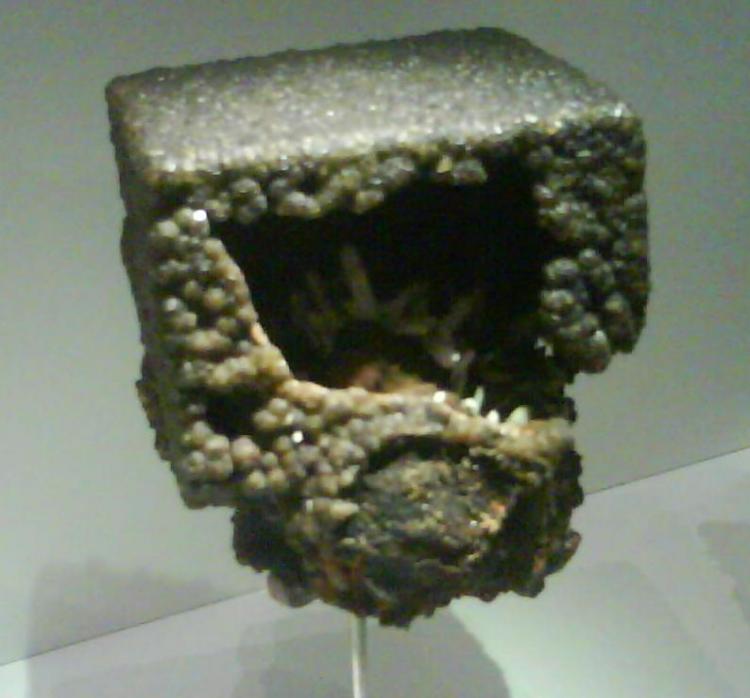
|
| Description: |
| Incredible Baryte, about 75 cms tall, |
|
| Viewed: |
65616 Time(s) |
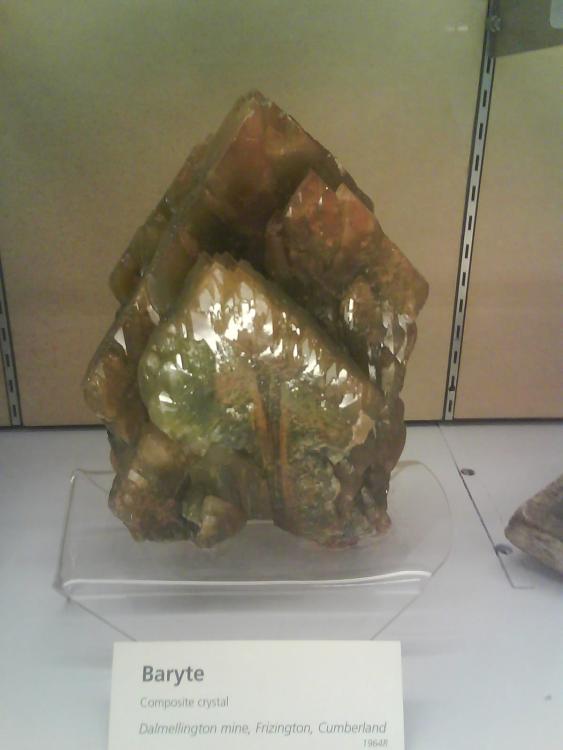
|
| Description: |
| Monster Galena specimen, see human for scale |
|
| Viewed: |
65561 Time(s) |
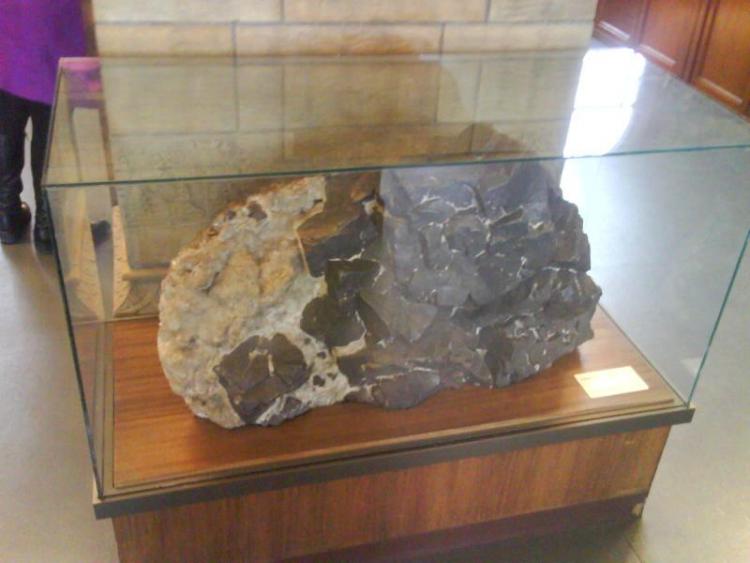
|
| Description: |
|
| Viewed: |
65605 Time(s) |
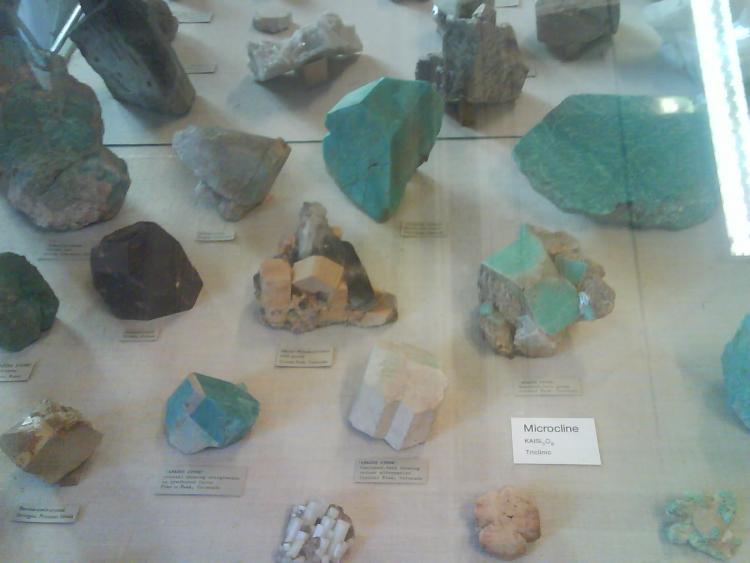
|
| Description: |
| Adularia about 30 cms tall |
|
| Viewed: |
65567 Time(s) |
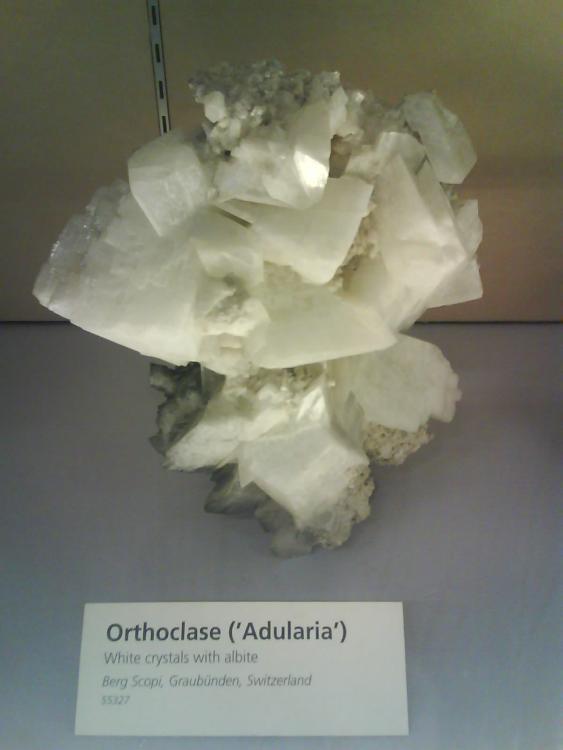
|
| Description: |
| Quartz stands about 25-30 cms |
|
| Viewed: |
65533 Time(s) |
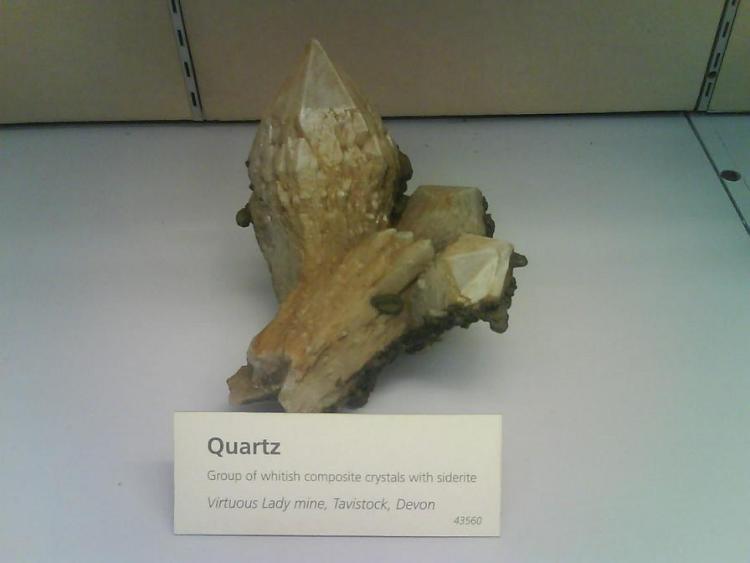
|
| Description: |
| Fluorite about 25 cms tall |
|
| Viewed: |
65552 Time(s) |
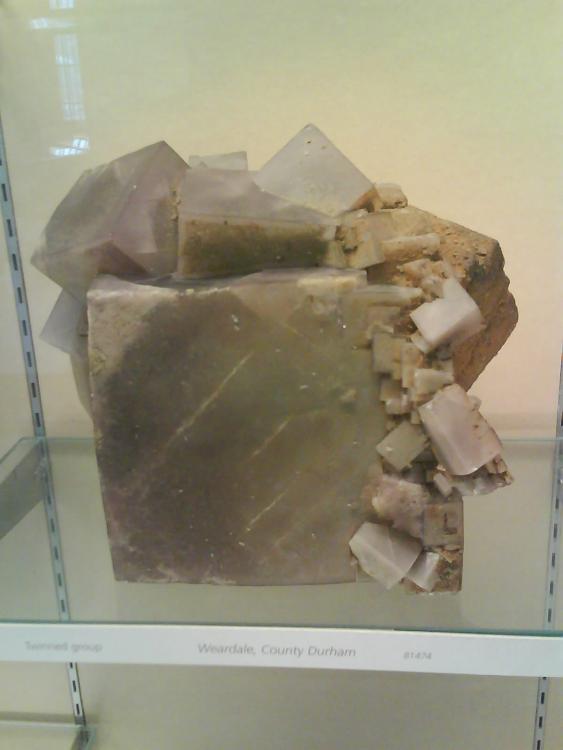
|
| Description: |
|
| Viewed: |
65615 Time(s) |
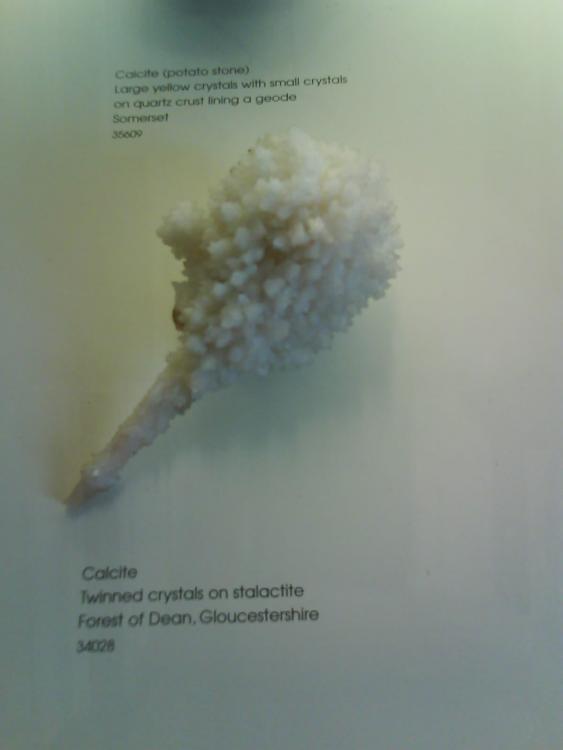
|
| Description: |
| enormous Japanese Stibnite, probably about a metre across |
|
| Viewed: |
65541 Time(s) |
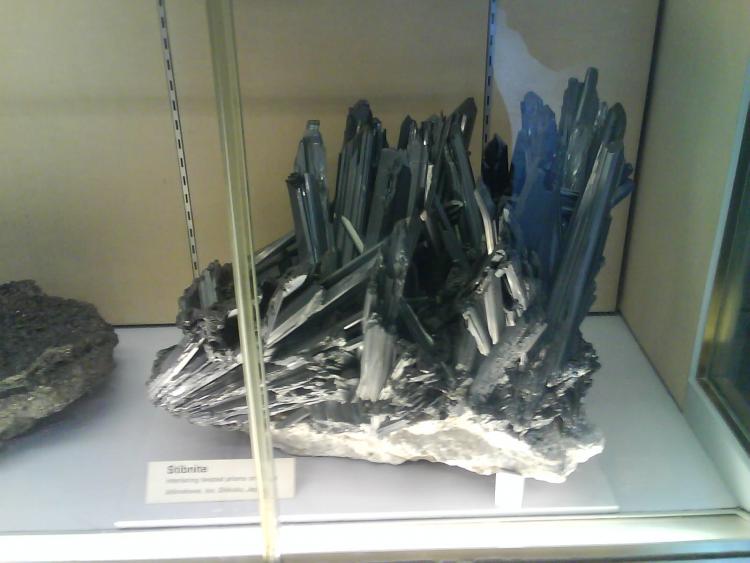
|
| Description: |
| a pair of stunning Cornish Calcites around 15 - 20 cms tall |
|
| Viewed: |
65513 Time(s) |
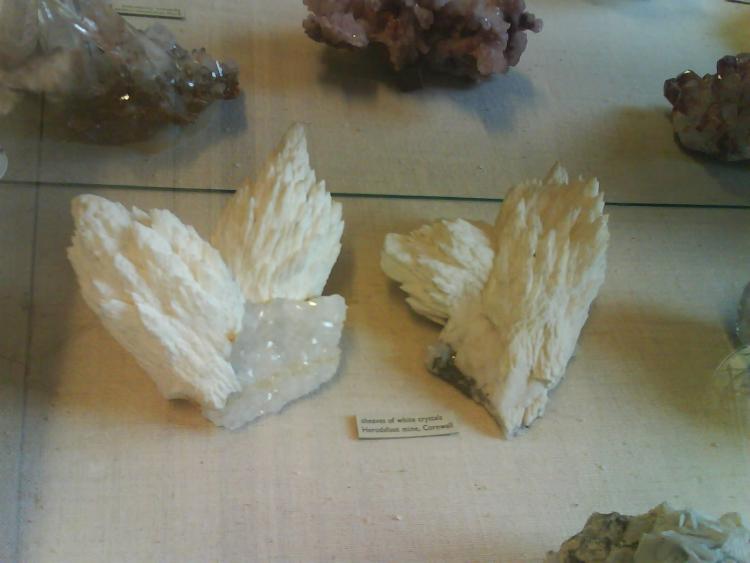
|
| Description: |
| Calcite maybe 30cms in diameter |
|
| Viewed: |
65577 Time(s) |
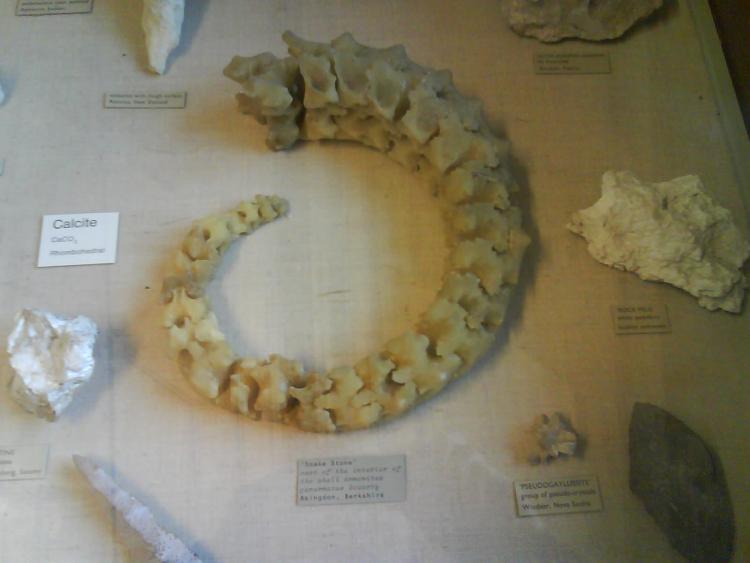
|
|
|
| Back to top |
|
 |
nurbo
Joined: 23 Sep 2008
Posts: 457
Location: Lancashire



|
 Posted: Feb 24, 2011 01:00 Post subject: Re: Natural History Museum London Posted: Feb 24, 2011 01:00 Post subject: Re: Natural History Museum London |
|
|
More pictures, so many of the pieces are enormous.
| Description: |
|
| Viewed: |
65432 Time(s) |
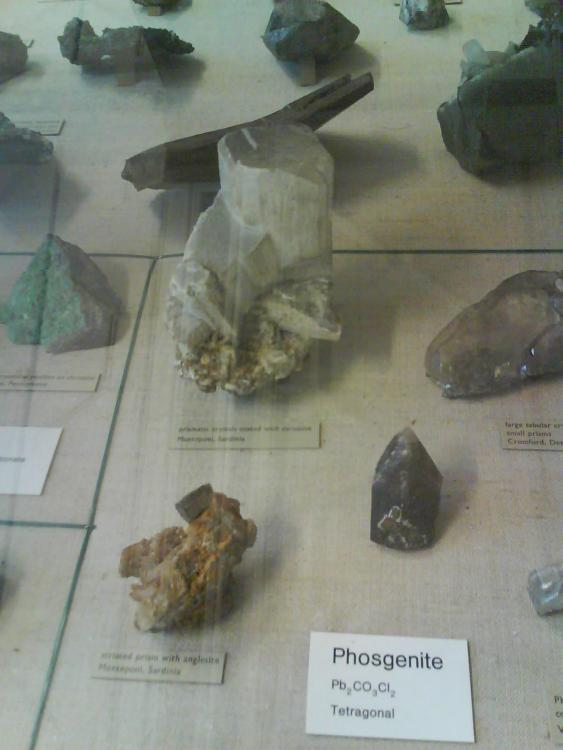
|
| Description: |
|
| Viewed: |
65443 Time(s) |
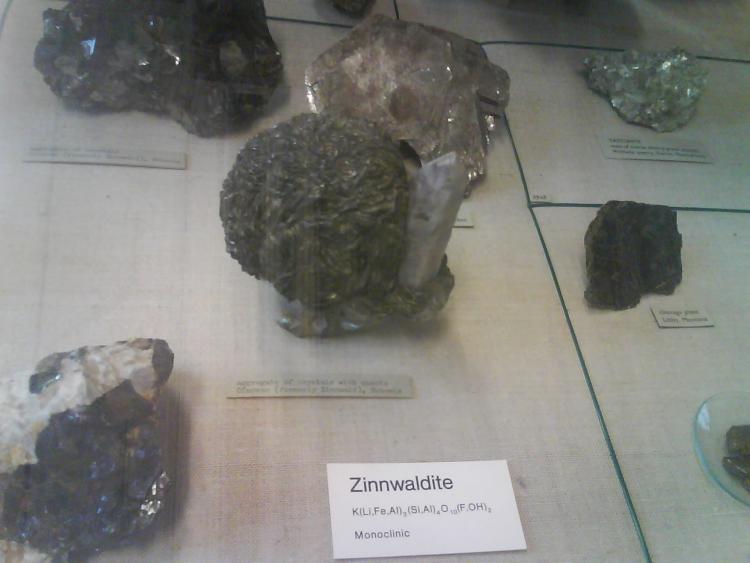
|
| Description: |
| huge Garnets in matrix about a metre across, |
|
| Viewed: |
65468 Time(s) |
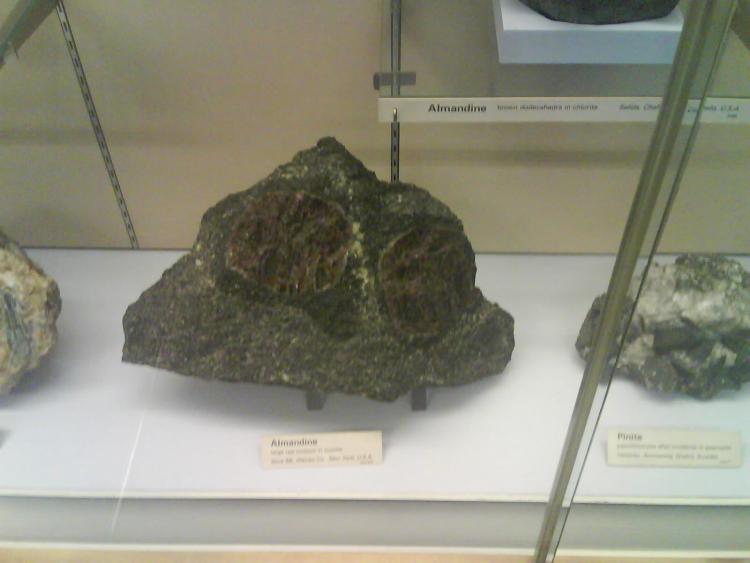
|
| Description: |
| Blue Fluorite from Ullcoats , wow! |
|
| Viewed: |
65405 Time(s) |
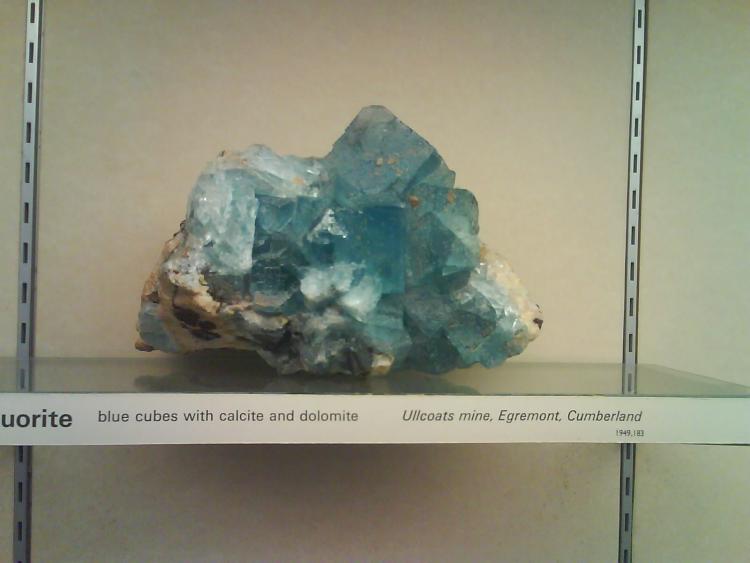
|
| Description: |
|
| Viewed: |
65408 Time(s) |
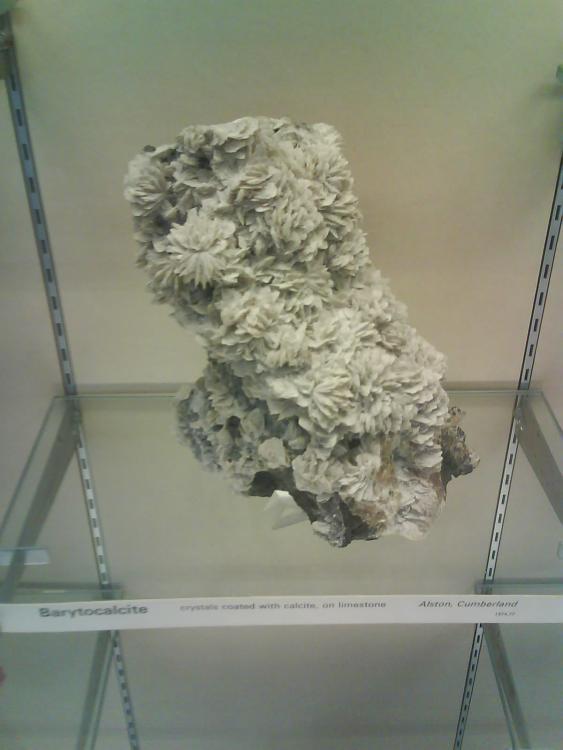
|
| Description: |
| another English Fluorite this one from Weardale |
|
| Viewed: |
65388 Time(s) |
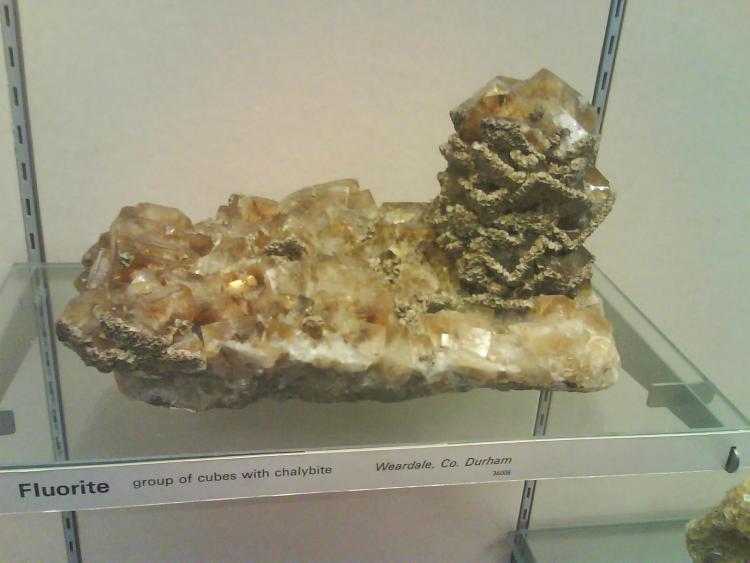
|
| Description: |
|
| Viewed: |
65360 Time(s) |
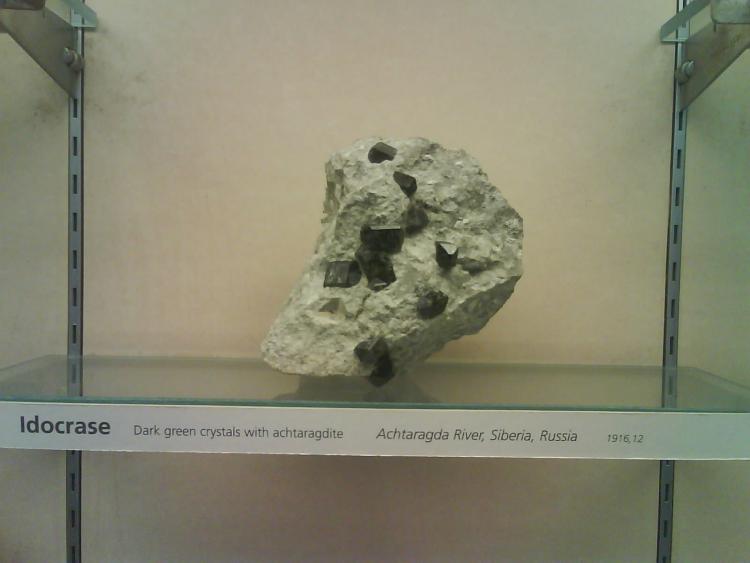
|
| Description: |
| Ojuela material is quite well represented too, |
|
| Viewed: |
65475 Time(s) |
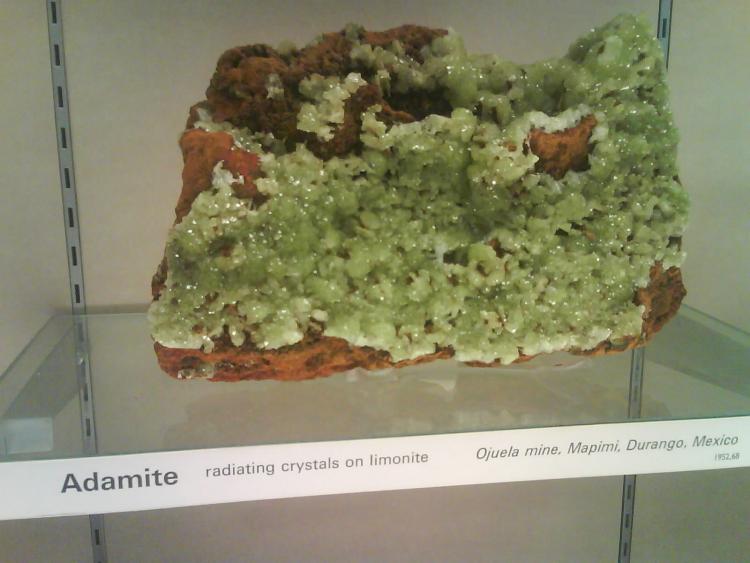
|
| Description: |
| Cave-in-rock Fluorite and another Cornish one, huge specimens. |
|
| Viewed: |
65398 Time(s) |
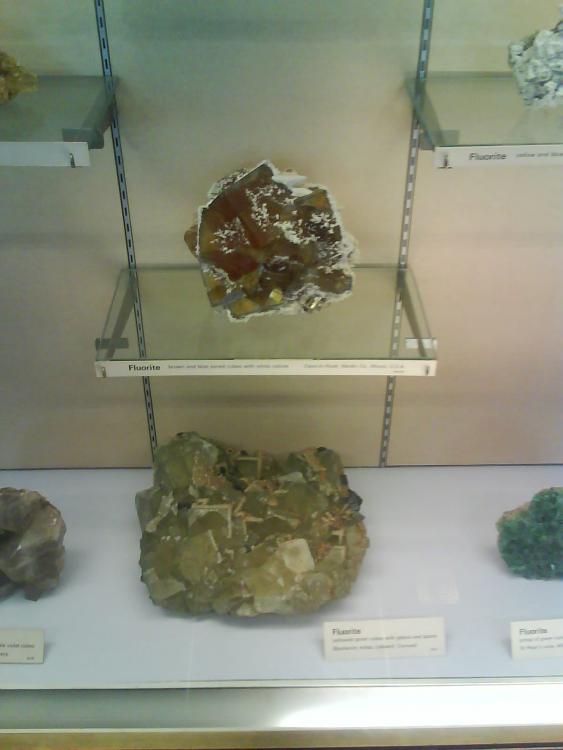
|
| Description: |
|
| Viewed: |
65444 Time(s) |
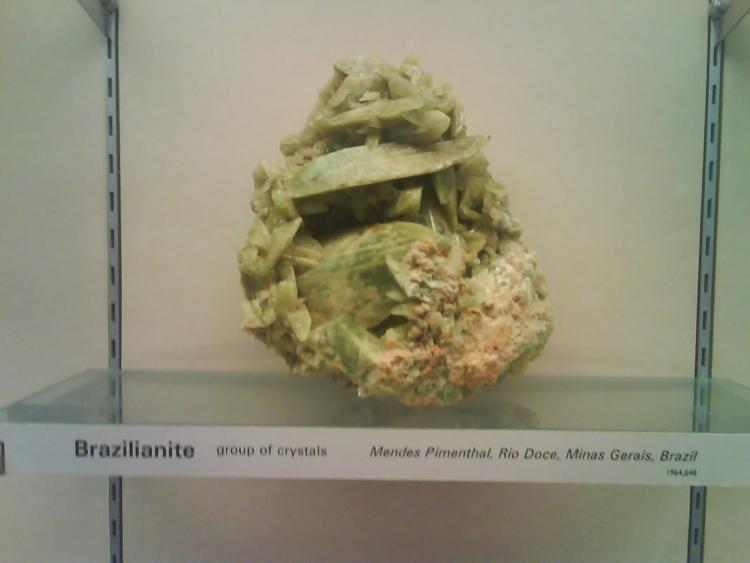
|
|
|
| Back to top |
|
 |
Jesse Fisher

Joined: 18 Mar 2009
Posts: 641
Location: San Francisco



|
 Posted: Feb 24, 2011 10:40 Post subject: Re: Natural History Museum London Posted: Feb 24, 2011 10:40 Post subject: Re: Natural History Museum London |
|
|
A few photos, taken summer 2010, from the area that was once the Geological Museum.
| Description: |
| Helidor beryl on feldspar from the Ural Mts., Russia. |
|
| Viewed: |
65330 Time(s) |
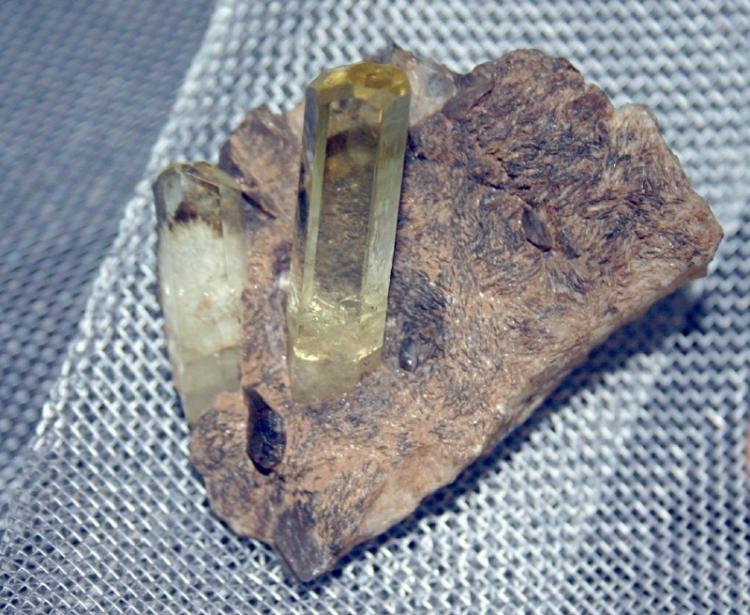
|
| Description: |
| Fluorite on quartz with chalcopyrite from Cornwall (Caradon mines, I think). One of my personal favorites in the museum! |
|
| Viewed: |
65329 Time(s) |
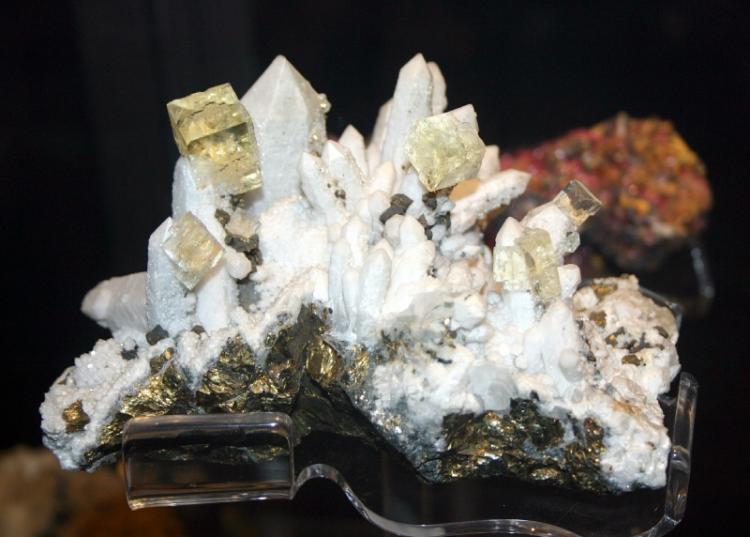
|
| Description: |
| Fluorite from Rotherhope Fell Mine, Alston Moor, Cumbria. |
|
| Viewed: |
65372 Time(s) |
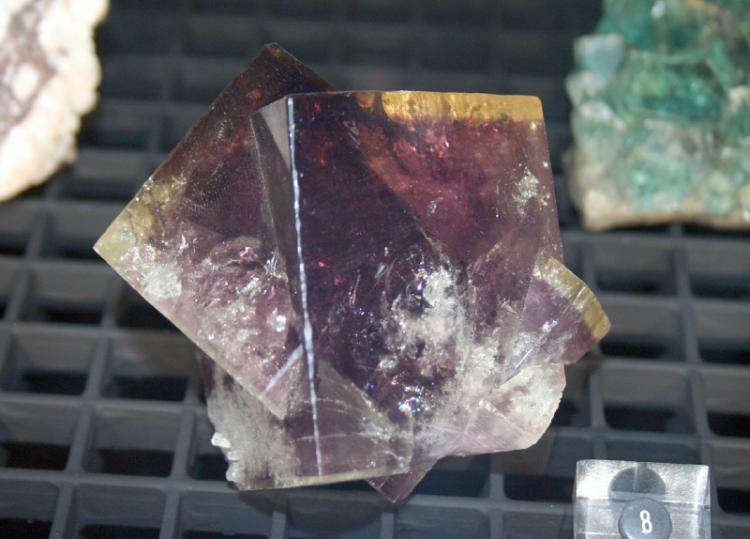
|
| Description: |
| Baryte from the West Cumbrian Iron Ore Fields around Frizington. |
|
| Viewed: |
65329 Time(s) |
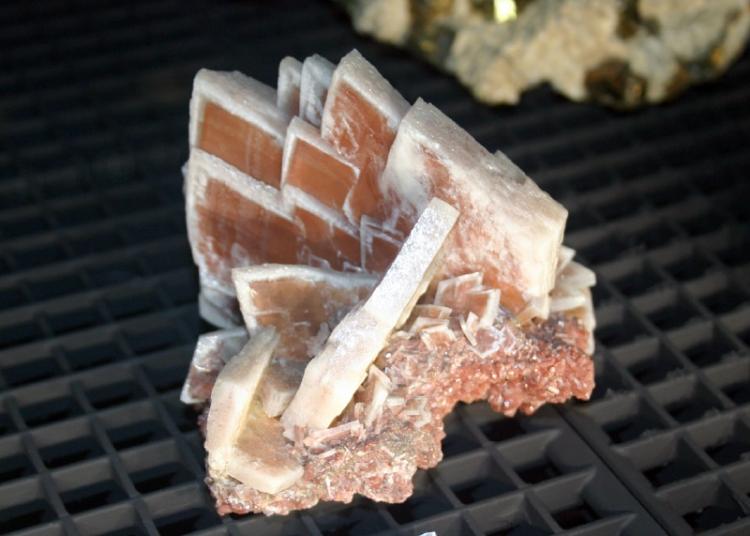
|
| Description: |
| A photo of the gallery that once housed the mineral display for the Geological Museum. |
|
| Viewed: |
65315 Time(s) |
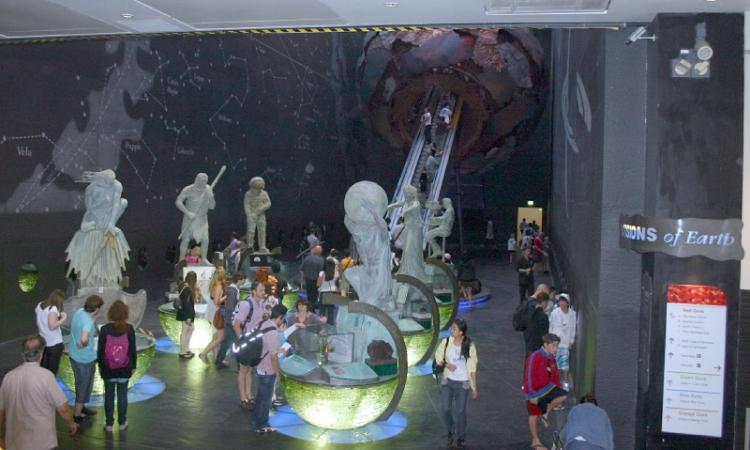
|
|
|
| Back to top |
|
 |
|





